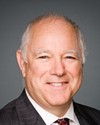Thank you, Mr. Chair.
Good afternoon, ladies and gentlemen. It's good to be back again.
My name is Gordon Jenkins. I am the president of the NATO Veterans of Canada. I am here with my colleagues. Jarrott Holtzhauer is our VP of plans and policies. Thurston Kaulbach—or Tud, as they call him in the valley—is our vice-president of advocacy.
The NATO Veterans Organization of Canada is an all-veterans organization. We have no civilians in our organization. It is also composed primarily of post-Korean to present-day veterans and serving members—the so-called modern-day veterans, as distinct from the World War II and Korean veterans, the traditional veterans.
Our web page has our purpose on it. If you're interested, it's at www.natoveterans.org. It is bilingual. Our purpose is clearly stated on page 1, the splash page, and it is, “We will continue pressing Veterans Affairs to provide NATO veterans the same benefits as WWII and Korea Vets”.
The first question we must ask is, what is meant by “transformation”? The definition is “a marked change, as in appearance or character, usually for the better”. VAC uses this definition. We accept it and we look forward to change in process.
Where we differ is on the VAC numbers and what is driving the need for this transformation. The key driver is that soon—all too soon—there will be no World War II veterans or Korean veterans for Veterans Affairs to serve. The end of World War II was 67 years ago, and even if you consider a serviceman or servicewoman who got out of the military in 1945 at 21 years of age, that person is 88 years old. Demographics are catching up with the World War II veterans.
Canada has been a member of NATO since the beginning of April 1949. That's a lot of Canadians who have served with NATO. It is estimated that in these years, close to one million—recognizing that we currently have 700,000 veterans on the books, not including those currently serving—Canadian men and women have served on NATO ships, in NATO units, or in NATO RCAF squadrons.
Modern-day veterans are going to be the future clients of Veterans Affairs, and Veterans Affairs must be prepared to serve this group in the future.
The topic of caring for our veterans is a subject that has been debated since the Boer War, and we're going to be celebrating its 110th anniversary. Unfortunately, the intensity of these discussions has been driven by the proximity of the country's latest military encounters. As a consequence, many of the deficiencies in today's existing Veterans Charter are a result of modifications associated with World War II and Korea. The post-World War II and the Korean veterans have been left behind.
A report prepared in March 2004 by the Veterans Affairs advisory council, entitled “Honouring Canada's Commitment”, contains an excellent condensed review of the history of veterans issues. The NATO Veterans Organization of Canada fully recognizes the sacrifices of World War II and Korean veterans and fully supports all the benefits available to that generation of Canadian servicemen and women. However, at some point in time, the federal government deemed it appropriate to place the post-Korean members of the Canadian Forces in an inferior category. The fact of the matter is that the vast majority of the so-called modern-day veterans served the country in uniform much longer and under equally hazardous conditions as our predecessors.
The rigours of military service have very few parallels in occupations in the civilian world, whether that service was in the air, on the sea, or in a land component. Many years of continuous days and hours in an armoured personnel carrier, tank, truck, ship, or aircraft, in many environments and in many countries, seeing things you should not see or don't want to see, takes its toll on the human body—as we're finding out—be it the knees, hips, back, lungs, hearing, or the mind. These ailments may not become evident until many years following release from the Canadian Forces, but they can be, and in many cases are, directly attributed to military service.
There is also the long-term impact on the families of the service personnel who are obliged to endure lengthy periods of absence of their spouses on foreign duty. It is estimated that there are currently upwards of 700,000 post-World War II and Korea veterans in Canada. Perhaps only as few as 200,000 belong to a veterans association, and probably even fewer require assistance from Veterans Affairs. Whatever the figure, there are many veterans out there who are in need of support. The major question here is why in Canada today a differentiation is made in benefits between veterans of WWII and Korea and post-war veterans who served this country equally and faithfully during the Cold War, the Balkans, in peacekeeping such as Cyprus, in the Gulf War, Libya, and now Afghanistan.
As members here are no doubt aware, the Veterans Affairs Canada-Canadian Forces Advisory Council, in its report of 2004, proposed 15 principles and procedures that would guide the development of the new Veterans Charter. In addition, the advisory council made six recommendations for priority consideration. Only a small portion of these recommendations were ever incorporated in the charter.
There is an inadequacy of the charter with respect to long-term care facilities for aging veterans. Veterans coming back from, say, Afghanistan think they're going to be taken care of by long-term care. That's not the case. Despite the flaws in the charter, it has been labelled a so-called living document. A major shortfall is the lack of provision of facilities for long-term care for aging veterans. Of the original 11 veterans hospitals created in 1915, and the subsequent expansion up to 45 after World War II, none remain.
VAC has made agreements with the provinces to provide for contracted beds within a number of medical facilities, but these contracted beds are available only to World War II and Korean veterans, not to non-traditional veterans. As the number of traditional veterans decreases, the contracted beds are turned back to provincial control for use by the general public. This is happening now in Ottawa right in Perley. The question is why these beds are not being made available to modern-day veterans, and made available to modern-day veterans on a priority basis.
It is our contention that the distinction in eligibility for benefits between traditional and modern-day veterans must be removed. This will finally give some validity to the minister's statement that a veteran is a veteran.
Ladies and gentlemen, veterans are a federal responsibility, not a provincial responsibility. The Canadian Forces are now, and always have been, a federal government agency. By logical extension, veterans of the Canadian Forces remain a federal government responsibility for the provision of care and its administration. The federal government has an inherent responsibility to provide efficient and detailed supervision of the provision of health care to all its veterans and to ensure a system of detailed accountability.
When this proposal was made to Veterans Affairs, the response was the following:
As the provision of long term care is a provincial responsibility, the majority of our Veterans are assessed and placed in approved long term care facilities by the relevant provincial agency. Facility licensing and monitoring are also provincial responsibilities.
The fact that veterans are assessed and placed in approved long-term care facilities by the relevant provincial agency removes from Veterans Affairs Canada any direct involvement with a veteran. There are at least 13 different health care systems and health care standards, each with its own set of priorities and each largely driven by provincial finances. Veterans, I repeat, are a federal responsibility, not a provincial one.
In conclusion, NATO Veterans is committed to ensuring that no veteran should have to strive for their health care benefits by resorting to public appeals for justice through news articles, camp-outs in front of the minister's office, or vigils. We should not be put in this position.
Thank you, sir.




